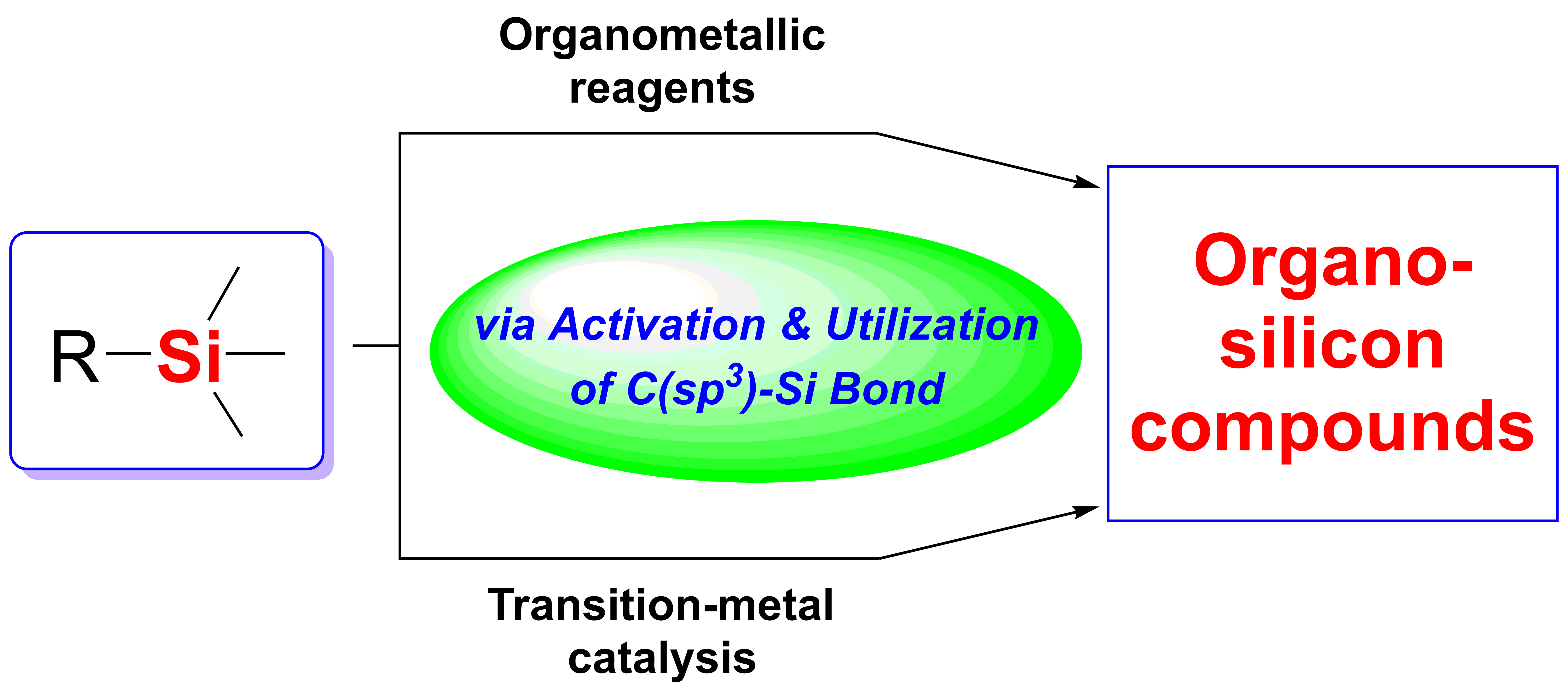Research news, May. 20th, 2018
Qi Yang, Kunbing Ouyang*, Liang Liu, and Zhenfeng Xi*
Prog. Chem. 2018, 30, 513-527. (Review)

The C(sp3)-Si bond in trialkylsilyl groups such as SiMe3 is among the most frequently encountered C-Si bonds, because many compounds are substituted with trialkylsilyl groups. Silacycles, particularly siloles, have been recognized and extensively studied for their potential applications in organic synthetic chemistry, material science, and medicinal chemistry. The cleavage and applications of the C-Si bond is important in organic synthetic chemistry. However, classic methods require a stoichiometric amount of either organo-magnesium or organolithium reagent. The harsh conditions in these methods do not tolerate many functional groups, thus limiting the synthetic application of these approaches. Transition-metal-catalyzed cleavage of the C(sp3)-Si bonds would be ideal for overcoming the limitation. The process not only shows a new and unique entry to functionalize the C(sp3)-Si bond, but also presents a powerful method to synthesize diverse organosilanes. Up to now, the majority of successful examples, in which the strategy of transition metal catalyzed reactions was applied into activation of C(sp3)-Si bonds, has concentrated on the strained cyclic compounds and functionalized substrates. Hence, the activation of unactivated C(sp3)-Si bonds remains a challenging issue. This review article summarizes recent reports on transition-metal-catalyzed cleavage and synthetic applications of the C(sp3)-Si bonds. In addition, the organometallic reagent-promoted cleavage of C(sp3)-Si bonds is also presented for comparison.
